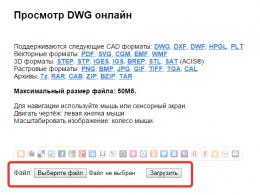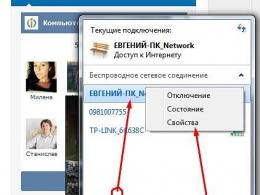Connecting bluetooth audio module spk 8635 b. Bluetooth module for audio transmission
Today I’ll tell you about the XS3868 audio module assembled on Bluetooth chip OVC3860 working with profiles A2DP v1.2 (audi transmission) and AVRCP v1.4 (control any bluetooth device such as mobiletelephone, bluetooth adapter etc).
Technical parameters of XS3868
Supply voltage: DC 3.6v - 4.2v
Maximum working current: 55mA (standby 10mA)
Bluetooth version: 2.0
Frequency: 2.402 - 2.480 GHz
Maximum transmitter power: Class 2, 4 dBm
Receiver sensitivity: -82 dBm
Range: Approximately 10m
Data transfer rate: up to 3 Mbps
Built-in headphone amplifier: 40mW
Power saving mode transition time: 5 minutes
UART connection speed: 115200 baud
Built-in stereo DAC: 20 bit
Built-in mono ADC: 16 bit
Built-in battery charge controller: Li-ion, Li-Pol
Battery charging current: up to 150 mA
Connection password: 0000
Dimensions: 30 x 17 x 4mm
General information
The XS3868 module is designed for soldering on a printed circuit board, the contact pitch is 1.3 mm (by the way, the module has small dimensions of only 30 mm by 17 mm), assembled on the OVC3860 chip, which is Bluetooth transceiver with low power consumption, only 55 mA in playback mode and 10 mA in standby mode. The chip operates at a frequency of 2.4 GHz, and Bluetooth v2 + EDR (improved bluetooth version v2, increased data transfer rate), which allows you to transmit good sound (20 bits), you can also use the module to control the volume, stop tracks and switch them, and of course, make calls.

The module has a green mask and all electronic components are located on the same side of the PCB. On the upper part there is an antenna with a place for soldering an external antenna, in the center there is an OVC3860 Bluetooth chip with a minimum electronic piping (capacitors and resistors, quartz). On the left is a 4XK6 LDO regulator in a SOT23-5 package, and to the right is another 4XY6 regulator (XC9235E26DM) assembled in exactly the same SOT23-5 package. A T24C08A memory chip is provided to store the configuration. On the reverse side printed circuit board, there are no components. The location and assignment of the pins is shown in the figure below.

Pin assignment:
1 (AOM) - audio output "GND"
2 (AOL) - audio output "Left"
3 (AOR) - audio output "Right"
4 (MIC+) - microphones (+)
5 (MICBIAS) - microphone (-)
6 (LED1) - LED connection
7 (LED2) - LED connection
8 (VCC) - 5V power supply (for battery charging)
9 (GND) - power GND
10 (VBUSK)
11 (VBAT) - battery (+)
12 (1V8) - output 1.8V
13 (RESET) - reset
14 (ONKEY) - PLAY / PAUSE button
15 (VOL +) - volume up button
16 (VOL-) - volume down button
17 (MFB1)
18 (UART_TX) - UART interface
19 (UART_RX) - UART interface
20 (MODE)
21 (NEXT) - NEXT button
22 (PREV) - PREV button
23 (MUTE) - silence button
The easiest way to connect XS3868, this will use a special adapter, which already has built-in buttons, indicator lights and a battery for battery life, but there are also disadvantages, the cost increases. There is a second way to turn on, with a minimum connection of wires. To do this, you need to connect power, a 4.7 kOhm - 10 kOhm resistor between the 1.8V OUT and RST terminals and an audio connector (if you connect passive speakers, without an amplifier, you need to add an amplifier to the circuit). We assemble the schematic diagram, which is shown in the figure. 
In the example, I am finalizing the Logitech Z240 speakers. On the back wall there is a transformer with a variable output voltage of 9V, the voltage is rectified on the board (by the way, I have active speakers with a built-in amplifier). Since the board uses a voltage of 9V, it is necessary to use an LM2596 voltage converter (there is little interference) with a voltage set to 3.7. We connect the input of the LM2596 module to the volume control so that when the amplifier is turned off, the XS3868 (because after 5 minutes the audio module will turn off) and the LM2576 output is connected to the XS3868 audio module, according to the diagram above.
Note: In general, it all depends on the circuitry, you can find a built-in stabilizer (a multimeter to help) or not find them at all (if a passive speaker), there is also a little interference (noise and crackling), this is due to the general power supply of the amplifier and Bluetooth, to get rid of it, you need to use an isolated dc-dc converter, as well as use ferrite cores, as they come, I will finalize it.
Now, when the speaker is turned on, a melodious melody will play, the volume will automatically be at maximum (of course, if the XS3868 is without an adapter). Next, we look for a new Bluetooth device on the phone with the name POR 1007BT, the password for connection is 0000. If the module is not used for 5 minutes, it goes into power saving mode (turns off), to return to working mode, you need to reset the power.
 Audio module XS3868 based on OVC3860 (Bluetooth 2.0)
Audio module XS3868 based on OVC3860 (Bluetooth 2.0) ![]() Adapter for XS3868
Adapter for XS3868
As an UMZCH, I used a stereo ULF of 20 watts per channel, which costs $ 20 on ebay. You need to disassemble it and inspect the inside of the case in order to understand where to get power from the module and where, in fact, to place it. When everything is unscrewed, the amplifier looks like this.

Now about the bluetooth audio transmitter. It is bought ready-made.


All together - adapter and stabilizer, costs less than 8 dollars.

The disassembled Bluetooth audio receiver is shown in the photo. Connect 3 wires to the audio jack.

Now solder the wires from the USB cigarette lighter - charger.

They are both designed for power supply from 12 V. If the amplifier works even from 24 V, it is still suitable. But if the amplifier is powered by a higher voltage or is powered directly from a 220 V network, you will have to take usb charger separately, or look for a reduced stabilized power supply on the board of the UMZCH itself. In general, deal with this yourself.

Now connect it to the bluetooth receiver according to the power on the board - this is 5 volts. Both modules are attached to an aluminum heatsink as the most massive element of the circuit.

The input wires are directly soldered to the line audio out of the amplifier, but if you want to add active subwoofer or connect something else like that, you need to drill a separate 3.5 mm output in the rear panel. Secure the bluetooth receiver itself with hot glue to a suitable place.
The other day came from the online store GearBest Bluetooth audio modules XS-3868 Ver.3.0 based on OVC3860. The modules are a device to which you can connect via Bluetooth and transmit the audio stream "over the air". The cost is approximately $3.5. The small size and power supply of the module, fully adapted to work from 3.7 volt Li-Ion batteries, allow, in my opinion, to integrate these modules into a huge number of their devices: this and homemade bluetooth headsets, and wireless and portable speakers, and a wireless interface for speakers and players, and some intercoms(unless, of course, the operating range suits), and everything else that a radio amateur's fantasy can reproduce.

Specifications of Bluetooth audio module XS-3868 based on OVC3860:
- Frequency 2.402 ~ 2.480 GHz
- Transmitter power 4 dBm (PCB antenna), Class2
- Receiver sensitivity -82 dBm
- Module size 30 x 17 x 3.4 mm
- Bluetooth: Version 2.0
- Range approx. 10 m
- Data transfer rate up to 3 Mbps
- Possibility to connect an external antenna via SMT platform
- Ability to connect a mono microphone
- Audio flow and volume control (buttons)
- Module operation indication by two LEDs
- Stereo audio output (Designed to connect headphones with 32 ohm speaker impedance - built-in 40mW headphone amplifier)
- Supply voltage 3.6 - 4.2 Volts
- Current consumption up to 55 mA in audio playback mode
- Current consumption in sleep mode is less than 10 mA (actually less than 1 mA)
- Time to enter power saving mode 5 min (when nothing is playing)
- Profiles: A2DP V1.2–Sink Only, AVRCP V1.4–Controller Only, HSP V1.2, HFP V1.5
- UART connection speed 115200 baud (used mainly for debugging)
- Built-in 20 bit stereo DAC
- Built-in 16 bit mono ADC
- Integrated charge controller Li-ion batteries, Li-Pol, charging current up to 150 mA
- Connection password 0000
The characteristics of the module copy the characteristics of the Bluetooth controller OVC3860.
The module has the following pinout:

Module pin assignment:
- 16, 17, 19 – stereo audio output (for headphones, not every audio system will pull, so when connected to some acoustic systems you will have to solder the preamplifier, unlike headphones, the 5.1 microlab system refused to work normally with this module when connected directly)
- 22, 23 - contacts for connecting a microphone (Bluetooth headset after all)
- 24, 26 - contacts for connecting LEDs
- 25 - 5 volt power input for battery charging
- 31 - earth
- 29 - battery plus
- 33 - output 1.8 volts
- 35 - contact reset
- 36, 37 - contacts of volume control buttons
- 43, 44 - UART interface
- 52, 54, 55 - contacts of audio stream control buttons
To start Bluetooth usage device does not need to do any complicated actions, you just need to connect the power (battery), a 4.7 kOhm - 10 kOhm resistor between the 1.8v out and rst pins and a headphone jack. By default, the module is visible to others Bluetooth devices like POR 1007BT. Connect, enter the password when prompted. The module is defined as a headset, and when connected, the sound will be transmitted already “over the air”. If you connect only power and headphones without module buttons, then the volume will automatically be at maximum. It all depends on the device to which the module is connected. So when adjusting the sound level on the tablet, the sound is also adjusted on this Bluetooth module, and when connected to a phone ( Philips xenium x130) the volume level simply remains at maximum or simply turns off no matter how you adjust the volume of the audio file.



Here the simplest circuit enabling the module:

Using a few more outputs of the Bluetooth module, you can make a slightly more functional device with buttons and LED operation indication, diagram:

And then, simply by adding a microphone, connecting it to the corresponding outputs of the Bluetooth module, using the appropriate microphone switching circuit, you can use the device as a full-fledged Bluetooth headset for talking on the phone, for example. By the way, you can estimate the dimensions of the parts and see that the dimensions of the device are no larger than many factory copies.
Although the module has the ability to charge a small battery, using this function here is not very beneficial: 1) nothing is played in the charging mode, 2) a small charging current, which means that only small batteries can be used, 3) switching to sound playback mode after charging requires additional action - either disconnect and connect the headphones, or press the reset button, which will have to be done, or simply distort the power. In my opinion, it would be better to additionally use a charging circuit for the battery, for example, based on TP4056:


The dimensions of such ready-made modules are small and they are smaller than the batteries themselves, even of a small capacity. So I think it's a little the best way than the built-in Bluetooth function of the module.

If you use such a module, you must observe two nuances: 1) you cannot turn on the charging module connected to the Bluetooth module without a battery, since the voltage without a battery at the output of the charging module can exceed 4.2 volts; 2) set the charging current for the used battery. The charging current is regulated by a resistor connected to the second pin of the TP4056 chip. By default, a 1.2 kΩ resistor is usually installed on charging modules, which corresponds to 1 A of charging current. 1.5 kOhm - 780 mA, 3 kOhm - 400 mA, 10 kOhm - 120 mA, 20 kOhm - 70 mA.
If you do not want to use the Bluetooth module as portable device with a battery, then instead of the battery it is necessary to make a power source of 3.7 - 4.2 volts, add capacitors to the power nodes in the circuit and use it as a stationary device.
Thus, for a small cost, you can get a DIY (do it yourself or do it yourself) kit for wireless audio transmission via Bluetooth.
Below you can download some documentation on the Bluetooth module. I hope this short review will be useful in finding solutions for amateur radio purposes.
I think many managed to grab at a discount bluetooth transmitter ORICO BTA-403, so it's time to talk about the receiver with support for this very aptX.
This module was originally purchased to replace the module in the car radio. But it was not possible to replace him. The money has already been paid, so you need to this module dispose of it in some other way.
The module is assembled on a CSR8645 chip. The chip is not the coolest in the line, but it has very good characteristics.
The module is really tiny 26 * 13 mm and almost weightless, it arrived without a track immediately in mailbox, I found a picture with a pinout on the Internet and hastily made just such a handkerchief. 
This is the first, test sample, I was in a hurry and made a mistake when connecting the buttons. (They still did not work, except for the power button, so in the final version the board will be without buttons).
The device is defined as F-3188, pairing without a password, after turning it off and on, it does not automatically connect.
The pitch of the side contacts is 1.1 mm, in principle, a thin soldering iron can be soldered directly.
The amplifier has a balanced output and is designed to connect headphones (for example, QCY QY7 are assembled on the same chip) and has 4 pins R + R- and L + L- This somewhat complicates the connection to the amplifier, which often has three wires (the Chinese solve this problem simply - R - and L- are connected to the "ground" through a capacitor. This will not work with this module. With this connection, a background appears. I connected it to an amplifier on the pam8610, after some manipulations it has a balanced input, so they will play in a pair in the kitchen )
Insignificant current consumption allows you to power the module from a linear regulator 1117 at 3.3 volts without any tricks.
In standby mode, it was not possible to measure the current consumption - it is so insignificant
(once the device showed 3 microamps, then it just shows 0).
Connected 
In playback mode. 
The sound quality was tested by connecting the module to the analog input of the Pioneer VSX-524-K receiver and the Pioneer S-ES21TB acoustic kit.
The repertoire was played from usb, using the receiver's own DAC and through the module with Galaxy smartphone S5.
According to subjective sensations, the amount of high and low frequencies is reduced via Bluetooth, the sound becomes flatter, but overall it remains quite pleasant.
The output volume when connected to the receiver is not enough, you have to increase it.
Perhaps it could be added, but the buttons do not work.
When you turn off the sound or when you just pause the module, the module turns off and a low-frequency background appears.
It was possible to reduce it a little by installing a variable resistor.
It was not possible to establish the range of action, but I freely moved around the apartment with the phone, there were no sound fading and no disconnections.
In general, I liked the module, the sound is incomparable with cheaper modules, the downsides are broken buttons and the lack of intelligible documentation.
Sometimes, it happens, you stumble upon some kind of bug for the first time, write off everything to circumstances and forget about it. Then it repeats over and over again, forcing you to start looking for problems and, if possible, fixing them. And when you find yourself in the middle of the night analyzing dump / debug / reading_manuals, it becomes clear that you can’t quit halfway and it’s a matter of principle to bring it to the end.
Such a story happened to me at the time of the review with a colleague of Klipsch KMC 3 consumer wireless Bluetooth speakers. I was faced with a situation where the “wireless” audio stream began to shamelessly interrupt, as soon as I placed the sound source behind me. I was given food for thought by another Bluetooth audio system, which performed much better under the same conditions. Such simple problem degenerated into a dive headlong into the innards of the Bluetooth protocol and the details of audio transmission using it.
Under the cut of the first part of the series of articles, we will easily and naturally get acquainted with the main protocols of the Bluetooth stack, delve into the dump of the connection of the source and receiver of the sound, understand the causes of the conflict between Bluetooth and Wi-Fi and find the root of my problem - intermittent sound.
 Let's leave behind the scenes (or transfer to the comments) the controversy on the topic “why do we wireless transmission audio, if you can get by with Orthodox wired solutions, saving a lot of money and winning in quality.” Let's agree that wireless streaming of audio from any device, both portable and not very, is interesting to us, because with it we can:
Let's leave behind the scenes (or transfer to the comments) the controversy on the topic “why do we wireless transmission audio, if you can get by with Orthodox wired solutions, saving a lot of money and winning in quality.” Let's agree that wireless streaming of audio from any device, both portable and not very, is interesting to us, because with it we can:
- Play audio from mobile devices(Google Music + iTunes Match = entire library in the cloud and accessible from any device) to wireless audio systems and receivers. Let's not forget that it is phones that are now winning the palm among the carriers of user music tracks;
- Sound the spaces in which the installation of wired solutions is difficult for a number of reasons (kitchen, terraces, balconies, outdoor areas of your country estate);
- Allow guests to “play their CD”;
- Forget about cradles, because parting with the phone for many becomes a painful process.
Thus, at the time of reading this article, we forget about the wired vs wireless holivar and plunge into the world of wireless technologies, in which, as it turned out, there are many interesting details, you just have to dig deeper.
King Bluetooth The hero of the occasion is Bluetooth technology, which was brought to life thanks to an Ericsson initiative back in 1994, then standardized by IEEE (802.15-1) and is currently being developed by the Bluetooth Special Interest Group (SIG). Currently, the Bluetooth SIG alliance has about 18,000 companies, among which, of course, there are those who produce audio components that can receive a stereo signal wirelessly.
The hero of the occasion is Bluetooth technology, which was brought to life thanks to an Ericsson initiative back in 1994, then standardized by IEEE (802.15-1) and is currently being developed by the Bluetooth Special Interest Group (SIG). Currently, the Bluetooth SIG alliance has about 18,000 companies, among which, of course, there are those who produce audio components that can receive a stereo signal wirelessly.
I recently got one of these devices. The Klipsch KMC 3 system satisfied everyone except for one thing: under certain conditions, it began to reproduce sound, terribly interrupted. The use case was as follows: the source of the audio signal was Macbook Air 2012, and it was worth placing it behind your own body 4 meters from the system (read “sit with your back to the speaker with a laptop on your lap), as the sound began to break. The second participant in the Bluetooth competition (a review of which is waiting for you at the end of the post) - Edifier Spinnaker E30, also suffered from signal fading, but to a much lesser extent. The question arose, what could be the reason for such a different behavior of the two systems under the same conditions?
There is a problem with signal propagation, but it was worth using under the same conditions mobile phone for audio playback, as the problem became much less noticeable. So it was decided to understand the causes and effects, which led me to the very beginning - reading the Bluetooth Core Specification, analyzing dumps network connection and modifications of important values for audio codecs. For a start, however, it was required to exclude the possibility of interference between Bluetooth and Wi-Fi.
One kitchen and several chefs
It's no secret that both Bluetooth and Wi-Fi (and many more systems) operate in the same frequency band - the ISM band - within the boundaries of 2.400 GHz - 2.4835 GHz. Using the same frequency band to transmit information from different systems will inevitably lead to signal interference, which means data loss. Precisely for interference wifi signals and Bluetooth, I initially sinned.
Modulation
To effectively transmit a signal (digital, analog) via radio, it is necessary to go through a modulation procedure. Let's skip the subtleties various processes signal modulation and concentrate on the facts that will help to present a picture of the spectrum in the average user's home today.
Therefore, when a colleague asked me to help him bring Bluetooth speakers he liked from the USA, I agreed without hesitation. So, as a contender for the laurels of the recommended wireless audio system under $300, we had a chance to consider a product from the Edifier company - a wireless stereo system.
At the same time, despite the presence of eminent brands in the list of competitors, none of us experienced prejudice regarding the Asian roots of Edifier. Still, the equal sign between “made in China” and “g #% but” has long been crossed out good products in the wire sector. Moreover, at first glance it becomes clear that the build quality is pretty good here.

There was no burning sensation in the pelvic area, even when we put the spinnakers next to the “reference” B&W Zeppelin Air, everything was assembled soundly and conscientiously. And as you can see, there was something to collect - the design of the speakers is at least unusual.

Tusks, fangs, horns - whatever associations the guests had, but the sea wolves know that the spinnaker is, in fact, one of the sails of the yacht. The 40cm drivers wrapped in black silk fabric are unequivocally aggressive, and modern interior a pair of Spinnakers should fit perfectly.

Let's pay tribute to fashion, a few words about the configuration. After opening numerous packages and boxes on the table, there was a decent pile of wires, because the kit includes: a connecting cord for connecting speakers, an optical audio cable, a 3.5 mm minijack, an RCA cable and a remote control remote control with a standard microUSB-USB cord to it.
To be honest, such an abundance of wires for seemingly “wireless” speakers is discouraging at first, but in reality, only two cables are enough - power and a 6-pin connecting cord between the speakers. The rest of the cables you get in the appendage and certainly will not be superfluous in the household.

The presence of a mini-jack and optical cables already indicates that the speakers can be connected to the playback source in the good old wired way, for which the Aux IN / Opt IN port is allocated on the connector part of the right speaker.

The attentive reader will pay attention to the Sub (Line) Out port, designed to connect an external subwoofer, which, to be honest, would be very useful for a pair of Spinnaker sails. But the “wired” connection is more of a nice bonus than the main purpose that lies in the wireless plane.

The Bluetooth pairing procedure is absolutely standard: we wait for the blue diode to blink at the peak of the right speaker and wait a couple of seconds for the Secure Simple Pairing procedure to pair the two devices without entering any PIN codes.

As soon as the sound transmission to external device will be activated, the volume will become changeable using the included remote, whose button on the top plays the role of a Play / Pause switcher, and a long tap switches the input source (bluetooth-line_in).

The remote has a non-slip base and a backlight to help you locate it in low light conditions. Unfortunately, the backlight with its brightness level only reflects the level of charge of the internal battery, but does not allow you to understand what sound source mode (Bluetooth or Line In) the audio system is in.

But whatever happens to the ergonomics and behavior of the remote control, the most important thing in the speakers is still the sound. From this point of view, Spinnaker can be seen as the owner of three emitters in each speaker, connected according to the tri-amp circuit! because it is doubtful to describe high audiophile matters in a system made of plastic, and even in an “art” format.
The overall impression of listening to compositions of various musical directions can be assessed on a ten-point scale by 7 points. Perhaps it is not in vain that 3 pairs of emitters in the speakers are equipped with their own channels from the amplifier. On the other hand, we would not brand this sound as “crystal”, as they say in a press release.

Although the Spinnaker E30 cannot boast of a record volume margin, but at a volume level of up to 90%, the sound did not break into a wheeze, and the tracks were played back without audible distortion.
The absence of deep bass, as, for example, in the KMC 3 and Zeppelin Air, can be attributed to the absence of a large cone, which simply did not have enough space, sacrificed to the god of design. The largest speaker responsible for low frequencies, pointing down and located at the base of the speakers. Thus, there are already two “subs”, but their small size will not make your floor vibrate.
However, if you have an old sub from any other system lying around, then try connecting it to spinnakers, such a symbiosis should satisfy both you and your neighbors.

The strength of the spinnakers, of course, is in the “not crushed” mid frequencies and the overall sound balance. If in the same Klipsch KMC 3 the crystal ringing of the high frequencies can even be attributed to shortcomings, here the tops are clearly audible without annoying protrusion.

Let's not forget about the possibility of stereopair spacing. Still, the stereo sound of speakers living in the same housing turns out to be monophonic at a certain distance from them. By placing a pair of speakers on opposite sides of the table, we got a very voluminous sound picture, not putting up with the feeling of sound coming from one point.

The bottom line is an aggressive and memorable design, an unusual remote control and a decent sound with the possibility of expanding the stereo base. I think that in the economy all this will definitely come in handy. In addition, an external subwoofer connector will help smooth out the lack of bass for those who will miss the built-in woofers sorely.
There are a couple of questions about the ergonomics of the remote control and the device for cables in the aluminum base of the speakers, but it’s enough to choose the most comfortable location once and for all to forget about the hassle with wires.
The answer to the question “is it possible to recommend the Spinnaker E30 in the price segment up to $300?” will be “yes”, if the above disadvantages are not critical for you. For a friend, this system cost Amazon $279.99 + $55 for delivery, while in Russia the retail price for the Spinnaker E30 ranges from 11-12 tr.
Speaking about the closest competitors, we can note the Creative ZiiSound D3x + DSx kit, which wins at the bottom due to the presence of a full-fledged subwoofer, but a drawdown is felt in the upper and middle parts. Top-shelf Bluetooth speakers, of course, are more expensive, and sometimes much more expensive, so is it worth overpaying for a brand when you can get decent sound quality and memorable appearance now?
PS4 And, of course, nothing prevents you from chilling “wireless plastic crafts in the oven, 1) buy Airport Express, 2) shelf acoustics 3) Profit.”






